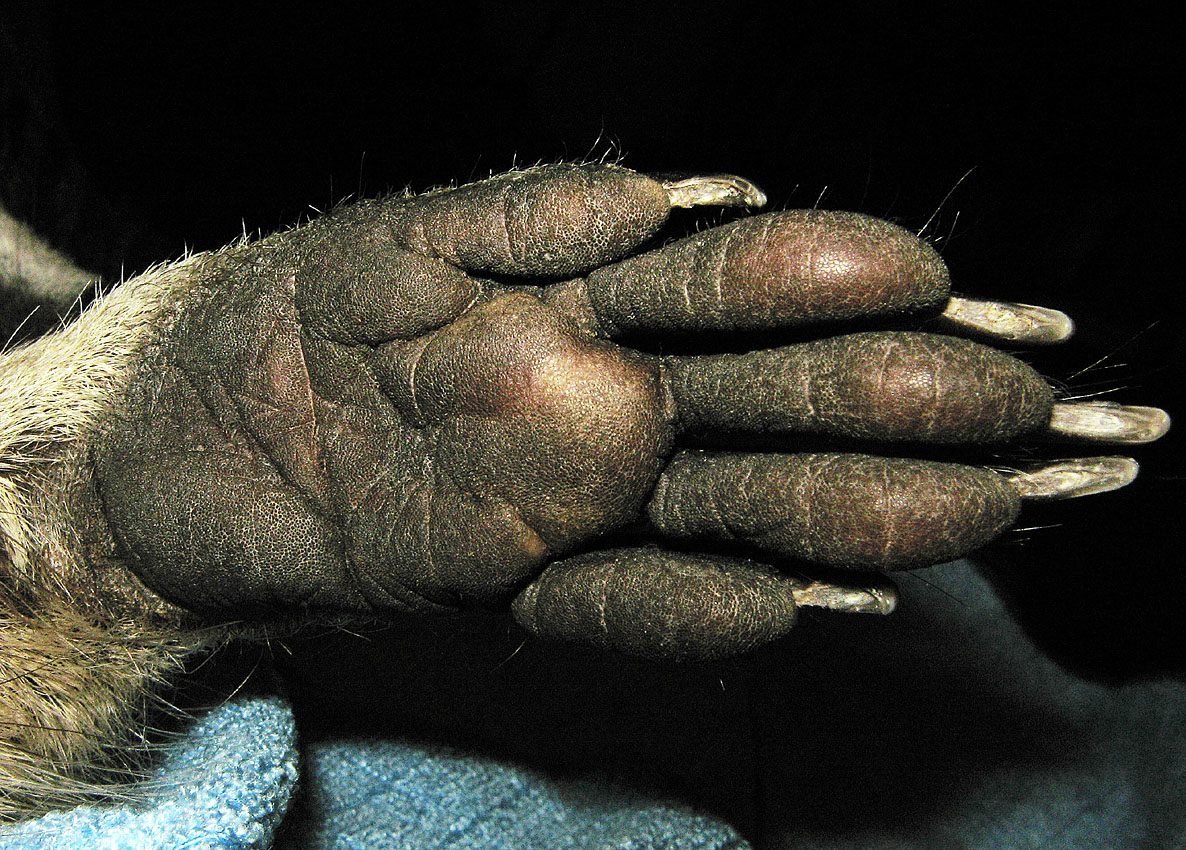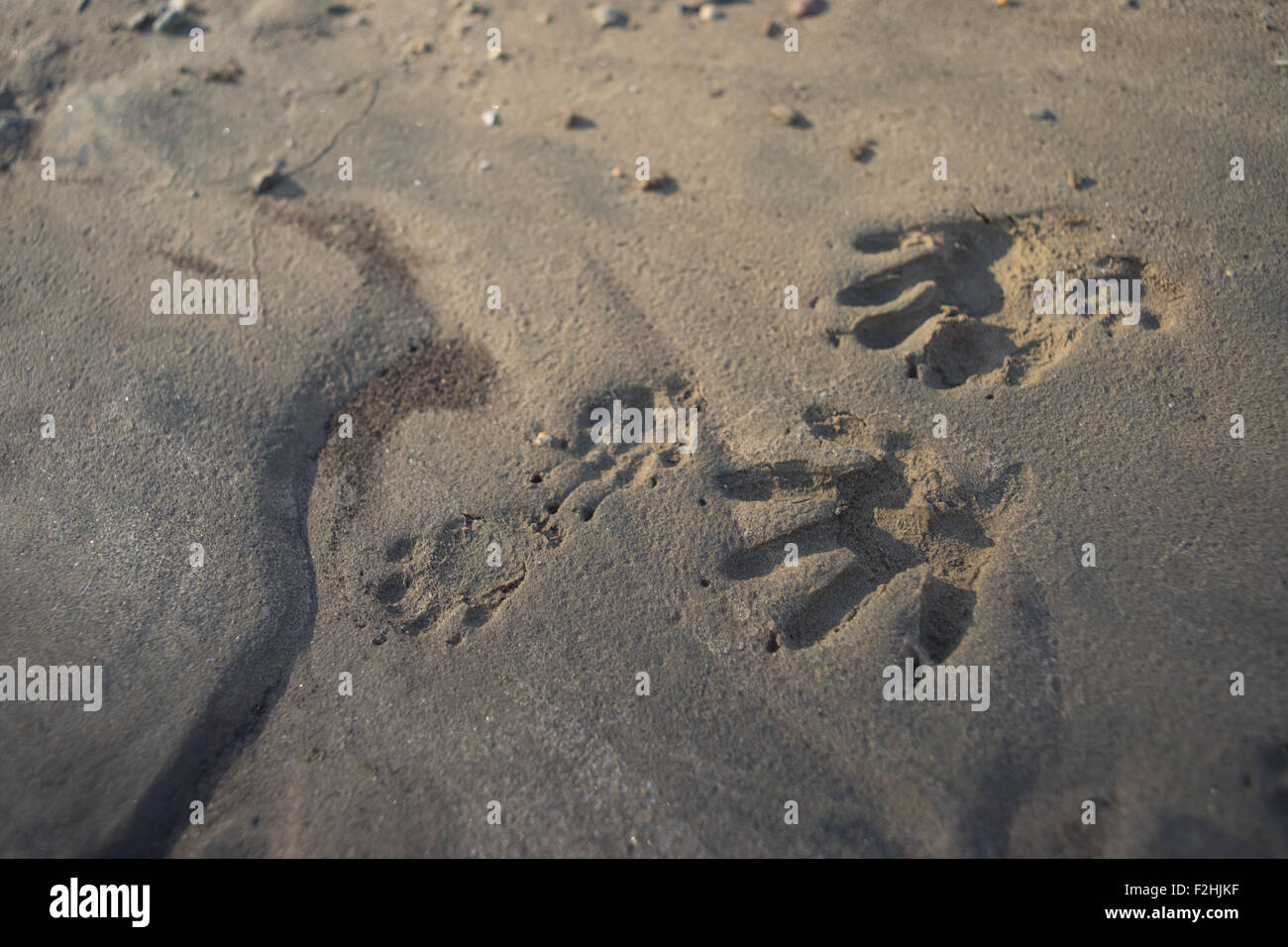

Another way to tell is the heels of a skunk - they are are longer than those of a cat, and the rear prints have a distinct heel pad that is usually between 2–2.5" in length. One difference is that skunks cannot retract their claws, so skunk tracks will leave larger nail impressions. Both animals possess a five-toed paw and both have long claws. Skunks tracks can be easily confused with those of the common house cat due to their similarities. I would much rather have opossums around than ticks.Most people can identify a skunk from their distinct black and white coloring and their offensive odor, but property owners can also use footprints as a way to assess the presence of Kaw Valley area skunks. They look quite disreputable with a lot of sharp teeth but I've never seen them bite anything that did not attack them. They don't carry rabies often, because their temperature is lower than ideal for the rabies virus. Opossum are fairly harmless and will play dead, I've seen one do this around a coyote, rather than fight. I think their spoor would be quite variable depending on what was on the menu that day.
Racoon paw prints full#
It was the size and shape of a small dog's but was much coarser, full of ? undigested seeds and other vegetation. They are the first to check out the fallen seed from the bird feeders and dig for the worms and grubs that seem to be more abundant around the fallen seed. Around my house they seem to come about an hour after sunset. Maybe the opossums have not adapted to bad weather yet. They don't seem to stay out of the rain or colder weather the way raccoons do, sleeping through bad weather.

You can see opossum in worse weather than raccoons. Like many other animals, opossum put their back feet in the tracks of their front feet or rather just behind, so it's common to see a front paw print looking like a little star, just a bit covered by the back print which is just a bit longer. The tail tracks is easier to see in deeper snow when it is harder to keep your tail out of the snow when you only have short stubby legs. This means that some tracks will have tail marks zig-zagging back and forth while others show no tail marks at all. The waddle is more pronounced in the larger older individuals.Īnother distinctive trait is that they can keep their tails up. They seem to waddle with their rumps going back and forth. Opossum have a very distinctive way of walking.

In these photos above, you can see the opossum's feet and clearly see the little pink toes widely spaced.
Racoon paw prints how to#
If you are interested, I have a page on how to tell dog from coyote tracks One clear indication that you are dealing with opossums is the spread out toes, these often look like little starfish.Īlthough they have nails, these don't seem to show up much in the tracks, unlike a raccoon or a dog which have prominent nail marks.
The opossum tracks also have a smaller front and a longer back track but the shape is very different with the toes clearly spread out. On the left, raccoon tracks, front and back paws, on the right opossum tracks. At first I figured they were raccoon or skunks but I soon realized that they were opossums.Ĭoyote and dog tracks however are not particularly difficult to tell apart. It took me a while to figure out what the strange new tracks were. They also have the endearing habit of eating ticks. They are far easier to have around than the raccoons. They would come at night and eat the catfood I left out for the 2 remaining feral cats I had moved from my Toronto colony.Īs it turns out, even though they look like insane giant rats having a bad hair day, they are very peaceful and don't seem to get into much trouble. Ontario, I discovered I had lots of opossums around. Many people are not familiar with the opossum tracks. Opossum have been migrating further north and we're starting to see their tracks.


 0 kommentar(er)
0 kommentar(er)
